USS Constitution has been preserved in the Charlestown Navy Yard since her return to Boston in September, 1897, one month before the celebration of the 100th anniversary of her launch. The Naval History & Heritage Command Detachment Boston is the civilian U.S. Navy staff that maintains and restores “Old Ironsides”. Many of the NHHC Detachment Boston staff have been showcased in the stories of this restoration blog. An “unsung” player in this on-going story, however, is the large granite and brick building that houses the Detachment Boston staff, offices, and equipment. This quick recap of the history of the “Joiners Shop, Carpenters Work Shop, & Rigging Loft”, as Building 24 (its more prosaic and common appellation) was first called in 1846, corrects the oversight of ignoring the importance of this facility to history of the Charlestown Navy Yard and, most important, to USS Constitution‘s preservation.
“Building 24, the Riggers & Laborers Shop, is significant as part of the mid-19th century development of the [Charlestown] Navy Yard; as an example of granite structures built under the cognizance of Naval Constructor Samuel M. Pook; as the sole surviving example of World War II wooden additions to existing structures; and as the only building in the Navy Yard to have continuous history of industrial use from its construction to the present day.” [Charlestown Navy Yard Historic Resource Study, Stephen P. Carlson, Volume 2, 467]
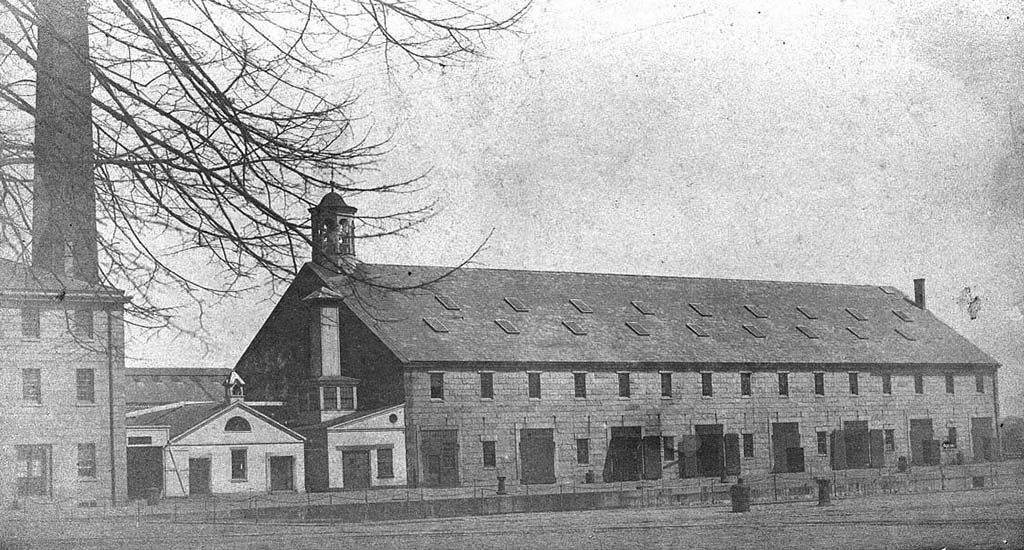
The Charlestown Navy Yard, founded in 1800, took several decades to develop before it was a reasonably self-sufficient ship-building and repair facility for the Navy. The building of Dry Dock 1, its companion Engine House and the Ropewalk, which all occurred between the 1820s and 1830s, began to establish this Navy Yard as an important component of the growing United States Navy. In 1846, Navy Yard Commandant Foxhall A. Parker (former commanding officer of USS Constitution from July 15, 1842 to February 16, 1843) put together a plan for the next phase of Yard expansion and construction. The building of a Joiners Shop, Building 24, is a direct result of Parker’s proposal. Situated alongside Dry Dock 1, the 200 foot long (for reference USS Constitution is 207 feet from her billethead on her bow to her taffrail on her stern), three story brick and granite building was to be a direct support facility for work executed in the dock.
Construction on Building 24 began in the summer of 1847 and was completed in 1849. In fact, the south end of the building carries the date “1847” carved in relief on the granite facing.
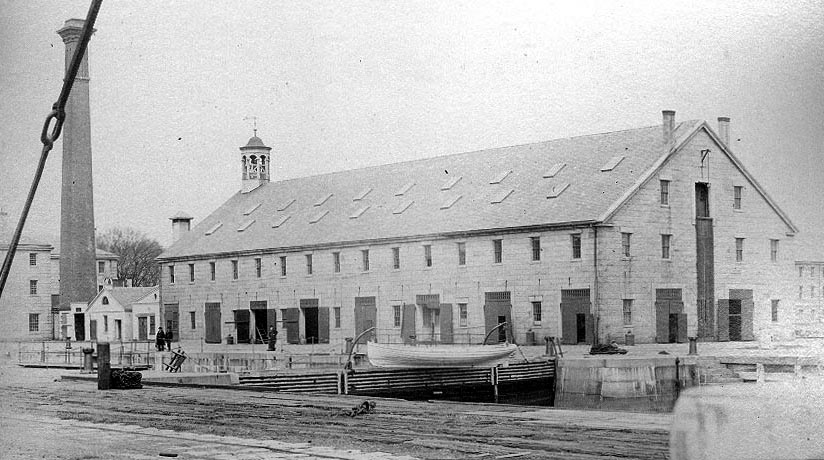
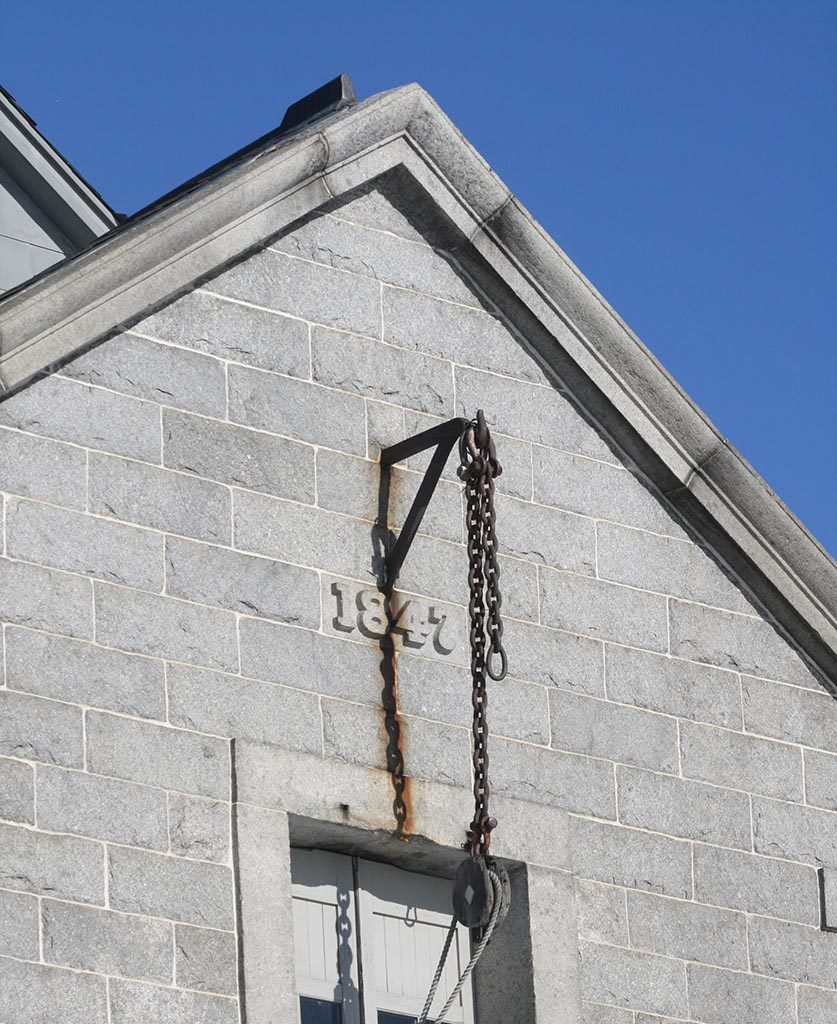
The Joiners Shop, which had originally been located in the building, was moved to its own structure in 1866. By the early 1870s, the Carpenters Shop occupied space on the first and second floors. The third floor was the domain of the rigging department.
The threat of fire was ever-present in the industrial complex of the Yard. As the Yard grew, with more and more buildings, the congestion caused by the arrangement of the structures increased the threat of a fire spreading from one building to the next. The interruption in production work and the costs of recovering from fires convinced the Navy inspection board that fire extinguishers and sprinklers were needed in the buildings. Unfortunately, these fire precautions were not implemented before a devastating blaze swept through Building 24 on September 25, 1910, bringing all of the fears home for the workers in the Yard. The building’s slate roof collapsed and destroyed much of the interior.
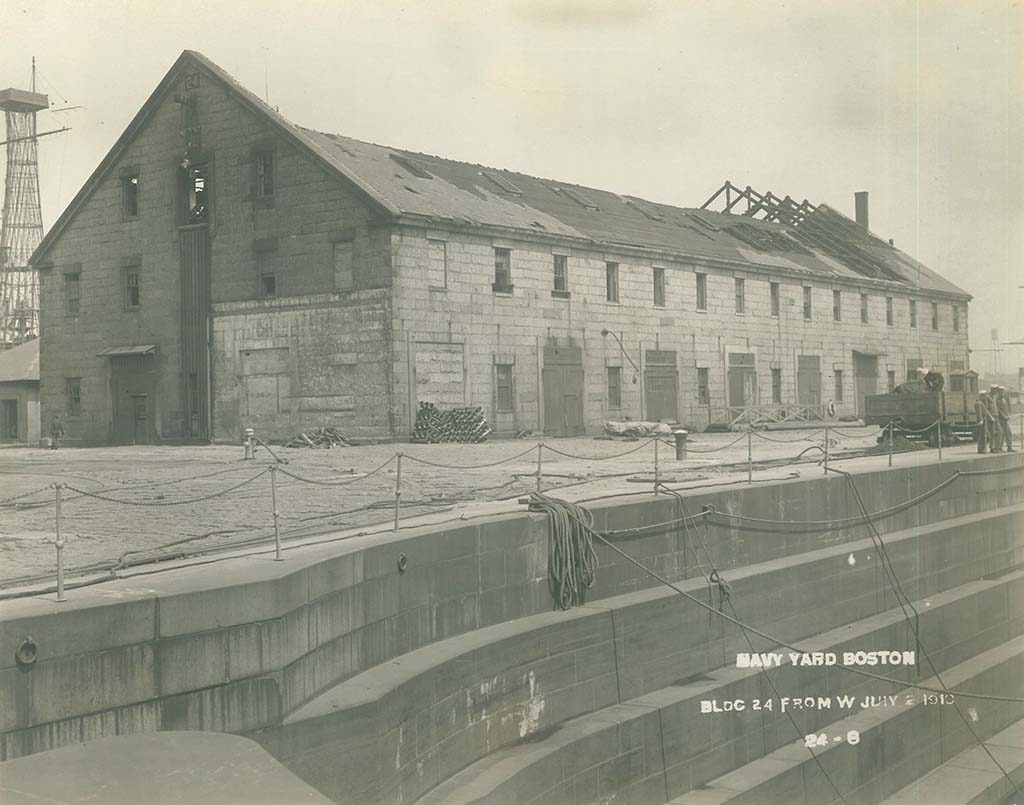
By 1914, Building 24 had been gutted of its ruined shops and offices and only the four walls of the original 1847-1849 structure were left standing. Over the next year a new, fire-proof steel and concrete interior was fitted into the building.
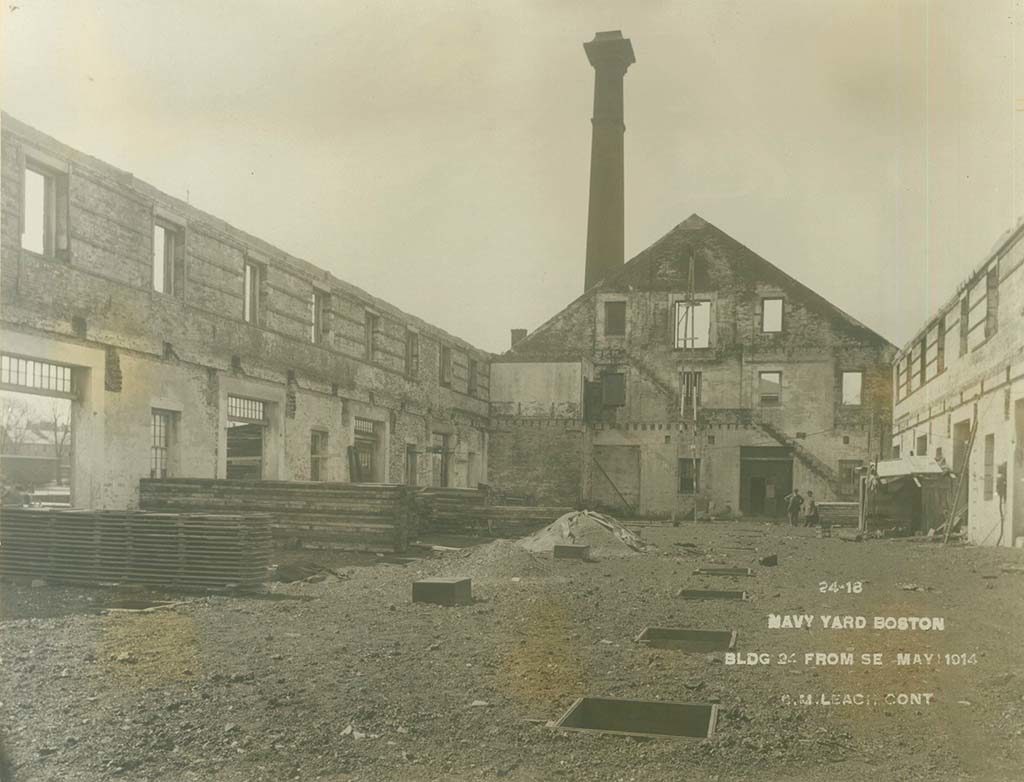
As shown by the February 9, 1915, photograph below, the Navy Yard had dutifully installed sprinklers and fire hoses in the newly re-built Building 24. However, the building was promptly (if temporarily) filled with tons of highly flammable hemp for the Yard’s ropewalk!
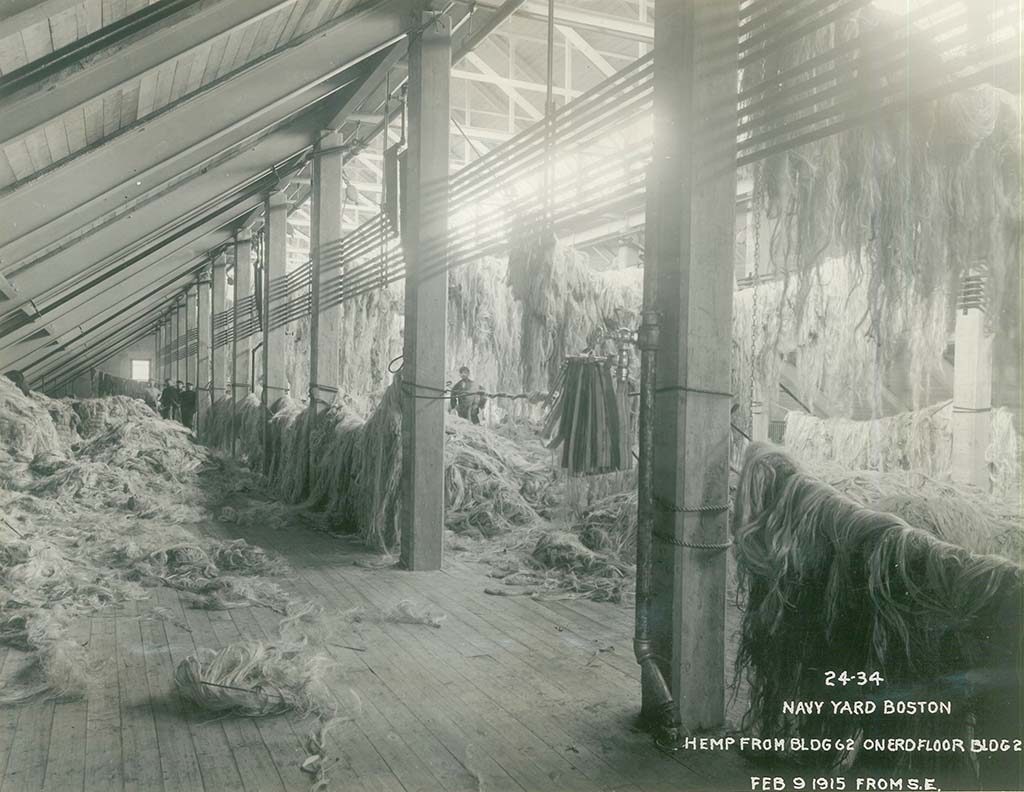
During USS Constitution‘s 1927 -1931 restoration, Building 24 was the headquarters for the shipyard workers. Because 85% of the ship was replaced in this massive project, many other Navy Yard shops were also involved in the operation, including the Joiners, Boat, and Mold Shops, and, of course, the Ropewalk for the standing and running rigging. A large lean-to was attached to the front (west) facade of Building 24, to house a Daniels planer that had been acquired at the Percy & Small Shipyard in Bath, Maine. The lean-to and the planer were removed once Constitution‘s restoration was complete.
By 1939, the Sail Loft was located on the second floor of Building 24. Though that loft is long-gone and replaced by administrative offices, a small relic is still visible – a name plate at the threshold of the southwest stairwell to the second floor (below).
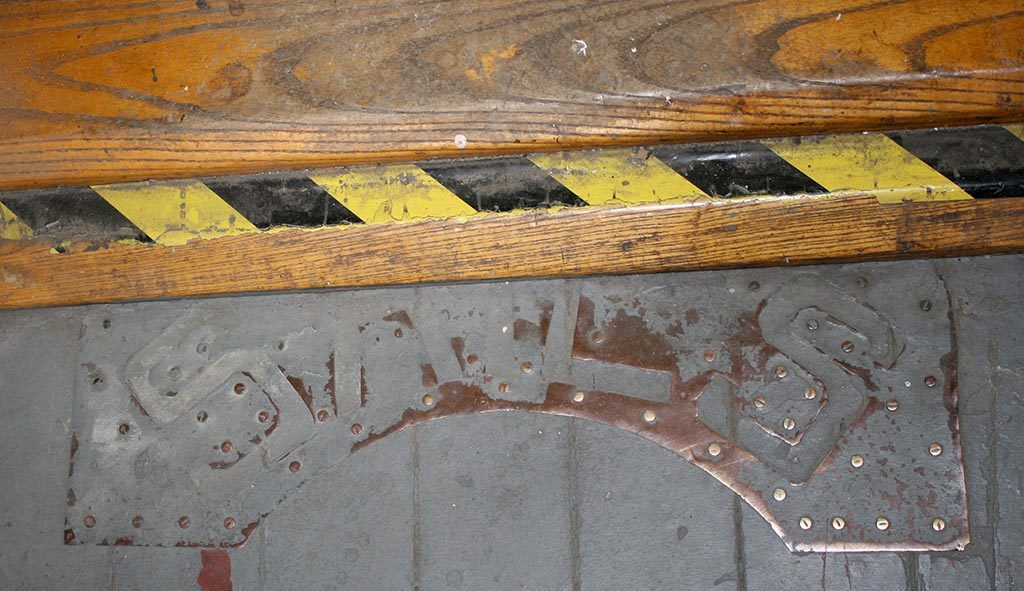
Building 24 continued to change as the 20th century progressed. With the increased duties of the Charlestown Navy Yard during World War II, more workspace was needed and a two-story, flat-roofed wing and a freight elevator were added to the building by 1943. By the end of the War, dockmasters who monitored the docking and undocking of vessels in Dry Dock 1 and the other Navy Yard dry docks also had their offices in Building 24. To facilitate the direct oversight of work in Dry Dock 1, a glassed-in dormer was added to the building’s third floor roofline.
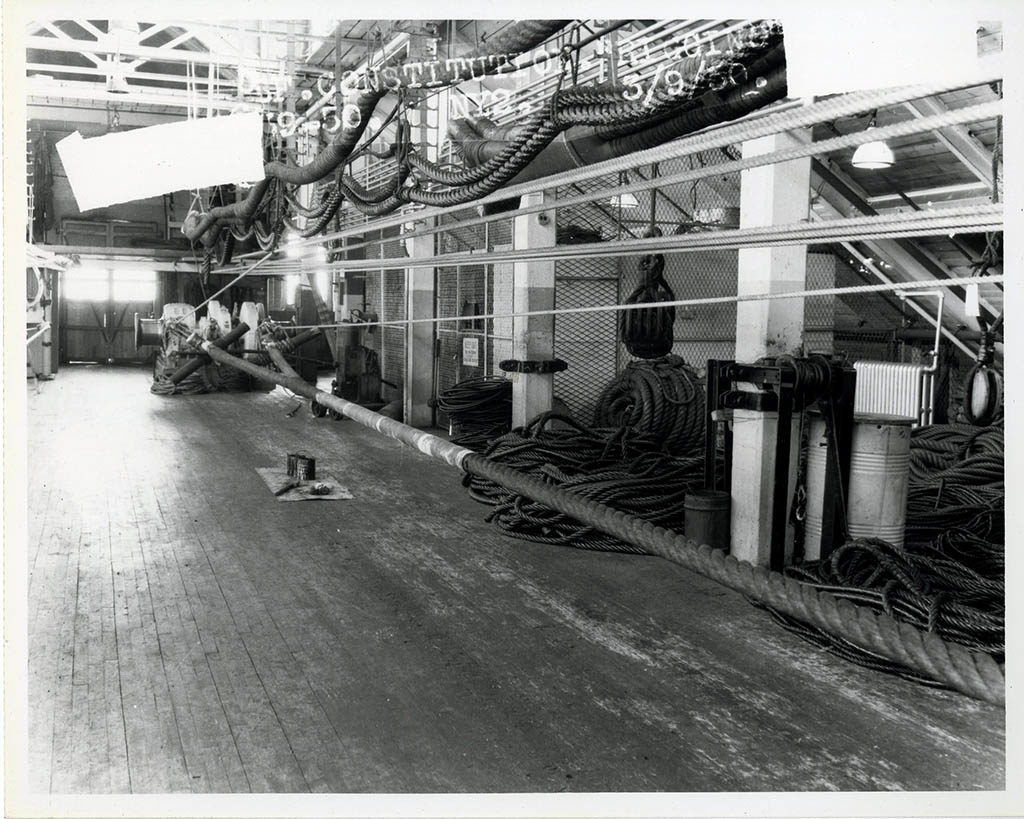
In the spring of 1973, the Department of Defense announced that the Boston Naval Shipyard (more commonly known as the Charlestown Navy Yard today) and other navy yards, bases, and air stations in California, Florida, Georgia, and Rhode Island would be permanently closed. On July 1, 1974, the Boston Naval Shipyard was officially disestablished after 174 years of existence. In the previous year, it had been determined that USS Constitution would remain in the Navy Yard even after the Yard closed and so a “maintenance and repair division” was created to become the U.S. Navy caretakers of the ship. On February 25, 1974, Building 24 was officially opened as the “USS Constitution Maintenance & Repair Facility” by the last Shipyard Commander, Captain Russel L. Arthur.
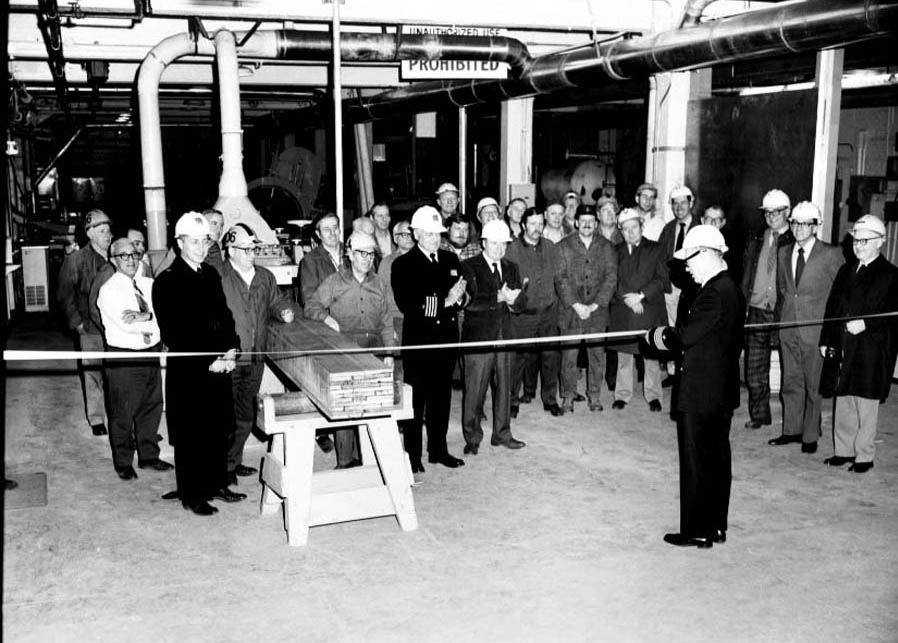
Whereas the shipyard workers in the late 19th century and first half of the 20th had the use of several shops throughout the Navy Yard to support the preservation of USS Constitution, the closure of the Yard necessitated a consolidation of those disparate shops and their duties into the one building allocated for the ship’s use.
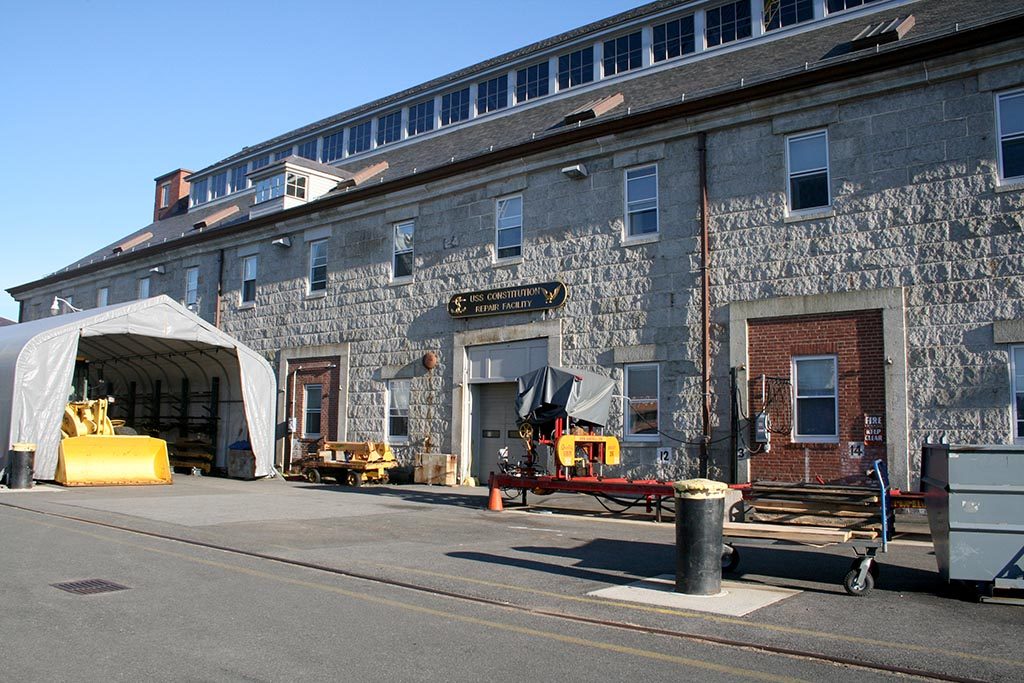
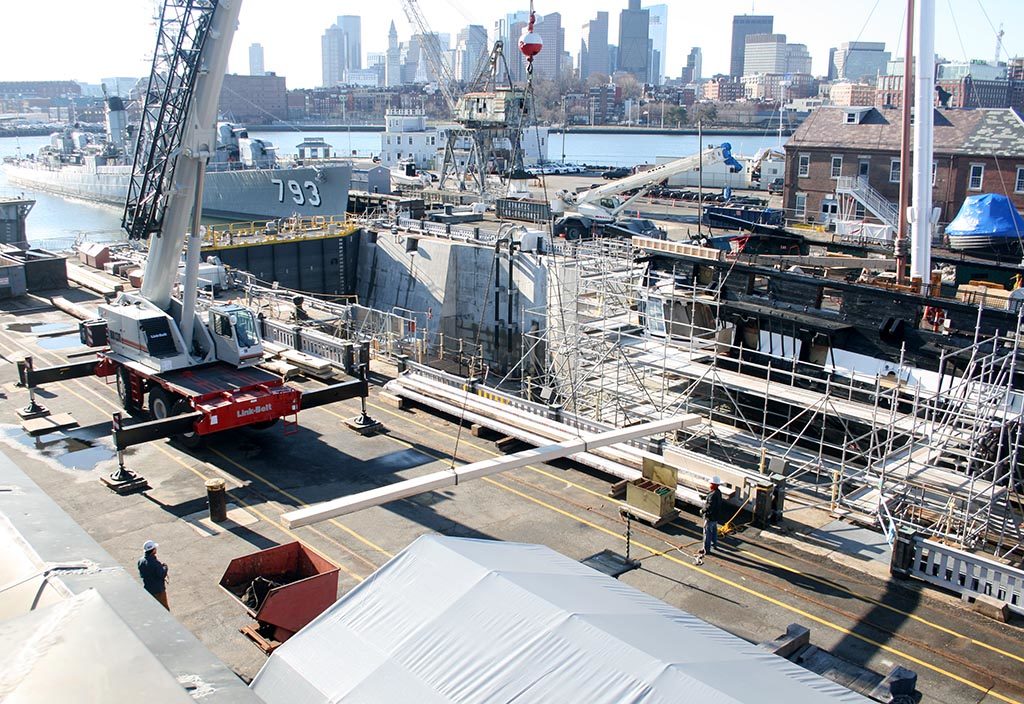
The third floor is still the traditional rigging loft, but it also serves as a sail loft when Constitution‘s Oceanus-fabric sails need repair.
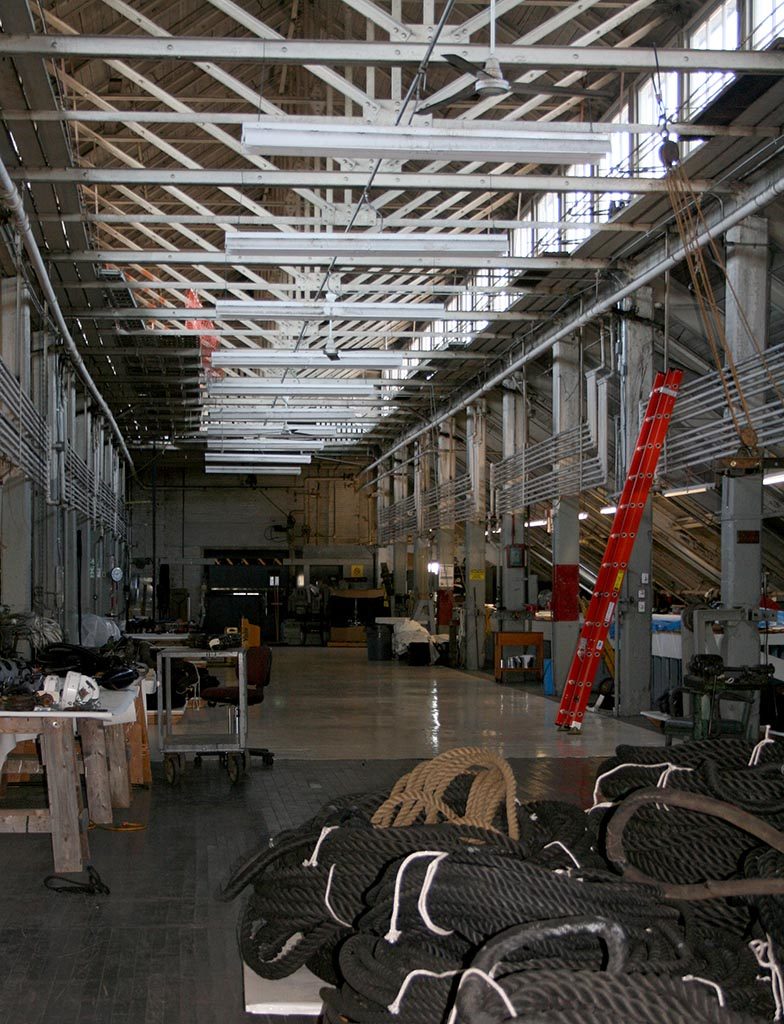
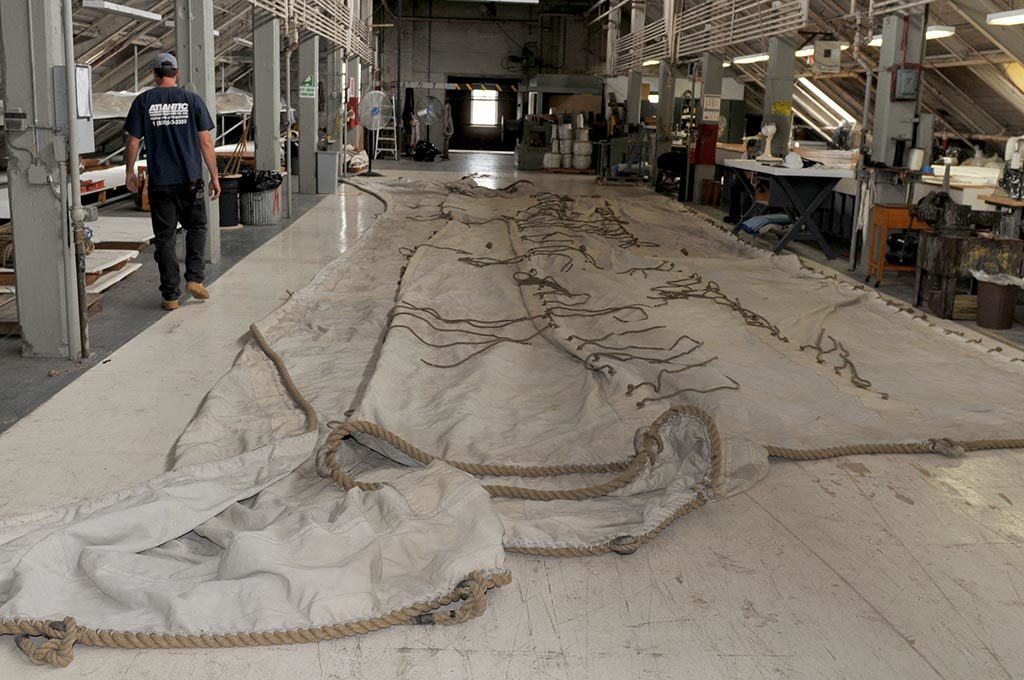
Building 24’s second floor is a combination of administration offices and warehouse storage for extra line and rigging equipment. The first floor houses the wood working equipment, including big radial saws, single and double-sided planers, ban saws, and a large ship saw.

The length of Building 24 can be of great advantage when working on large pieces removed from USS Constitution. For instance, all of the ship’s yards, from the smallest (the mizzen royal at only 19 feet) to the largest (the 94-foot main yard) can be brought inside for repairs.
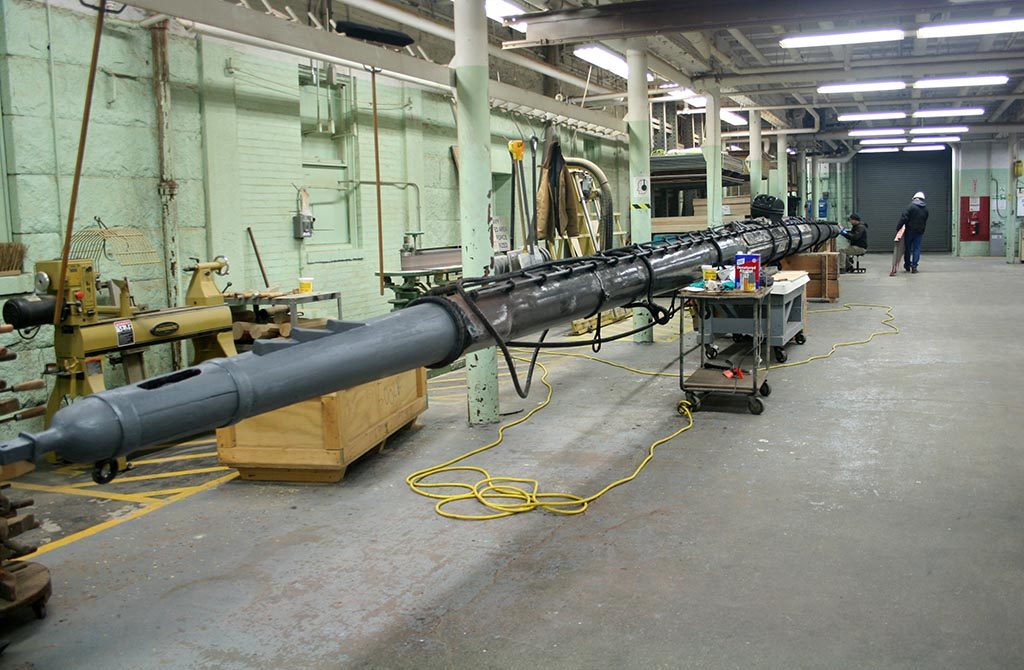
Building 24 is of great historic value to the story of the development of the Charlestown Navy Yard. As the exclusive preservation facility for USS Constitution for over 40 years, it has been the silent partner of the Naval History & Heritage Command Detachment Boston in maintaining and restoring America’s Ship of State.
Special thanks to Stephen P. Carlson, Historic Preservation Specialist, National Parks of Boston, for his detailed and exhaustively researched Charlestown Navy Yard Historic Resource Study which was most useful in crafting this post.
_____
The activity that is the subject of this blog article has been financed in part with Federal funds from the National Maritime Heritage Grant program, administered by the National Park Service, U.S. Department of the Interior, through the Massachusetts Historical Commission, Secretary of the Commonwealth William Francis Galvin, Chairman. However, the contents and opinions do not necessarily reflect the views or policies of the Department of the Interior, or the Massachusetts Historical Commission, nor does the mention of trade names or commercial products constitute endorsement or recommendation by the Department of the Interior, or the Massachusetts Historical Commission.
The Author(s)
Margherita Desy, Historian, Naval History and Heritage Command Detachment Boston
Historian, Naval History and Heritage Command
Margherita M. Desy is the Historian for USS Constitution at Naval History and Heritage Command Detachment Boston.
